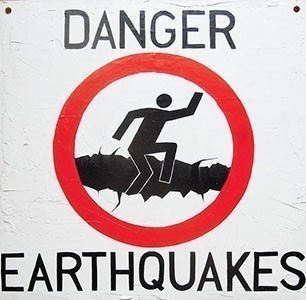
©2013 by Andy McGuire
By Jolie Breeden
While early warning systems for earthquakes have been advancing at varying paces around the globe, a new effort by the United Nations hopes to improve their progress and make them more available to developing countries.
The International Platform on Earthquake Early Warning Systems hosted its first session on December 8. The platform will work to increase knowledge sharing between scientists, public- and private-sector stakeholders, and policymakers worldwide in order to create and operate the systems in susceptible areas, according to a UN statement.
“This project is exciting because it has the potential to bring earthquake early warning to many more regions of the world,” Professor Richard Allen, Director of the Seismological Laboratory at the University of California, Berkeley said in the statement.
Allen, whose lab is one of the U.S. Geological Survey’s partners in the ShakeAlert network, has already worked to bring early warning technology to the U.S. West Coast. There, a series of seismic sensors collects information on ground movement, sends it to a central site for analysis, and then determines if a damaging quake is on the way.
If the system senses a dangerous quake, messages can be sent to first responders, utilities, and transportation officials who can take actions such as slowing trains or shutting off gas lines to limit damage. At the moment, such warnings have a slim timeline—mere minutes at the most.
“You’re talking about seconds, tens of seconds, or just a few minutes’ warning,” Allen said.
Although those warnings—which are shorter when the receiver is closer to the quake’s epicenter—are brief, they can still be life saving.
Perhaps more impactful for developing countries, however, is a related project that Allen’s team is close to realizing. Called MyShake, it’s an app that would send alerts to smartphone users and collect information from them in turn.
While earthquake-prone countries such as Chile, Mexico, China, Japan, and Turkey have been able to fund the infrastructure necessary for early warning systems, the technology is expensive to implement and monitor—pricing poorer countries out of the market. MyShake might solve that to some degree by turning smartphones into an instant sensor network.
“There are many countries, especially in the developing world, that don’t have the resources and don’t expect to have the resources to develop a traditional seismic networks,” Allen told California Magazine. “But there is a rapidly expanding smartphone and cell phone user base the world over.”
Regardless of the technology employed, the new UN platform, which is key to implementing the Sendai Framework for Disaster Risk Reduction, will address a pressing need for increasing disaster preparedness in developing nations that suffer disproportionately from earthquake-related damage.
“Over the past 10 years, earthquakes were responsible for the highest number of deaths from disasters emanating from natural hazards,” Flavia Schlegel, Assistant Director-General of UNESCO, said in the statement. More focus is needed to mitigate earthquake disaster risk worldwide.”
Jolie Breeden is the lead editor and science communicator for Natural Hazards Center publications. She writes and edits for Research Counts; the Quick Response, Mitigation Matters, Public Health, and Weather Ready Research Award report series; as well as for special projects and publications. Breeden graduated summa cum laude from the University of Colorado Boulder with a bachelor’s degree in journalism.